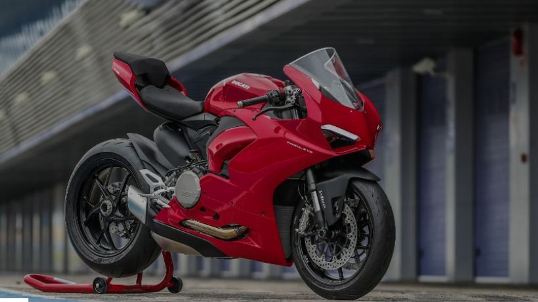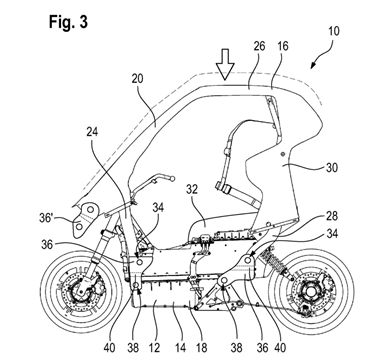
Ducati Panigale V2 Launched In India
"The all-new Panigale V2 in India at a price of INR 16.99 lakh."
The new supersport from Ducati is aptly called the baby Panigale and takes its design cues from the mental Panigale V4. The Ducati Panigale V2 is the first BS6 compliant motorcycle to be launched by Ducati India and replaces the 959 Panigale in India and the world over.
The Ducati Panigale V2 uses a 955 cc L-Twin super-Quadro motor which makes 155 bhp at 10750 rpm and has a peak torque output of 104 Nm at 9000 rpm. In comparison to the 959 Panigale, the peak power and torque go up by 5 bhp and 2 Nm. Ducati says that more than 70 per cent of the torque is available from 5,500 rpm.
The Panigale V2 now gets an updated 6-axis inertial measurement unit (IMU) along with updated Ducati EVO 2 traction control, cornering ABS, standard ABS and of course wheelie control. In addition, there's also engine braking control on offer along with a bi-direction quick-shifter. The motorcycle gets three riding modes, which are Sport, Street and Race. The settings for each riding mode can be adjusted through the new 4.3-inch TFT instrument console.
Braking is handled by Brembo M4.32 monobloc callipers and Brembo master cylinders with twin 320 mm discs on the front wheel. Both ends get a 5-spoke alloy 17-inch alloy wheel. The front wheel is wrapped in Pirelli Diablo Rosso Corsa II 120/70 ZR17 rubber while the rear wheel is a fatter Pirelli Diablo Rosso Corsa II 180/60 ZR17 unit.
The all-new Panigale V2 in India at a price of INR 16.99 lakh.
Also Read:
BAJAJ PULSAR NS 200 ABS REVIEW
BAJAJ PULSAR 220 PRICE IN NEPAL | FULL SPECIFICATION
NEW UPCOMING ELECTRIC CARS IN NEPAL 2020 | PRICE, SPECS
TVS MAX 125 PRICE IN NEPAL | SEMI TRAIL BIKE? | FIRST LOOK | SPECS
NEW UPCOMING BIKES IN NEPAL 2020 | SPECS, PRICE EXPECTATION
BAJAJ DISCOVER 125 PRICE IN NEPAL | FULL SPECIFICATION
KTM BIKES IN NEPAL WITH FULL SPECIFICATION AND PRICE
TOP 5 200CC BIKES IN NEPAL IN 2020 | UPDATED PRICE










